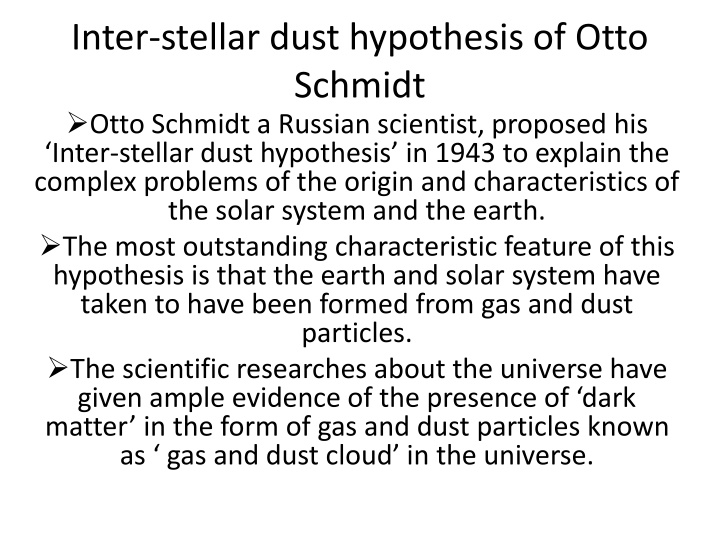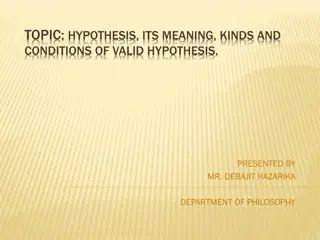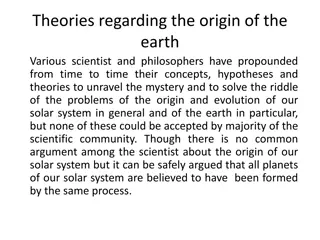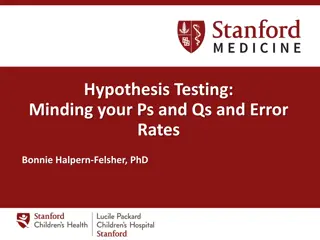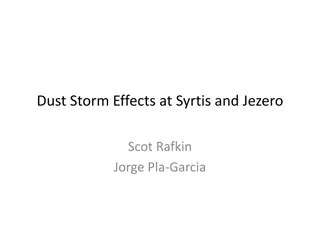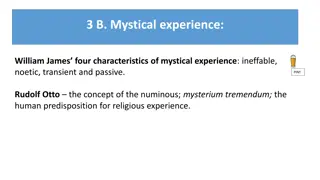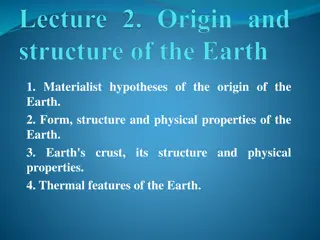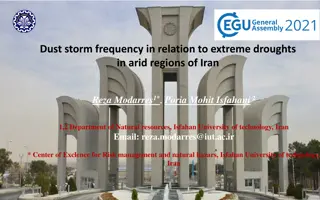The Interstellar Dust Hypothesis of Otto Schmidt Explained
Russian scientist Otto Schmidt proposed the Interstellar Dust Hypothesis in 1943 to explain the origin of the solar system and Earth. According to this hypothesis, gas and dust particles from the universe formed our solar system. The dark matter in the form of gas and dust clouds played a crucial role in the evolution of the sun and the formation of planets and asteroids. This theory suggests that the sun captured dark matter during its galactic revolution, leading to the formation of the solar system as we know it today.
Download Presentation

Please find below an Image/Link to download the presentation.
The content on the website is provided AS IS for your information and personal use only. It may not be sold, licensed, or shared on other websites without obtaining consent from the author.If you encounter any issues during the download, it is possible that the publisher has removed the file from their server.
You are allowed to download the files provided on this website for personal or commercial use, subject to the condition that they are used lawfully. All files are the property of their respective owners.
The content on the website is provided AS IS for your information and personal use only. It may not be sold, licensed, or shared on other websites without obtaining consent from the author.
E N D
Presentation Transcript
Inter-stellar dust hypothesis of Otto Schmidt Otto Schmidt a Russian scientist, proposed his Inter-stellar dust hypothesis in 1943 to explain the complex problems of the origin and characteristics of the solar system and the earth. The most outstanding characteristic feature of this hypothesis is that the earth and solar system have taken to have been formed from gas and dust particles. The scientific researches about the universe have given ample evidence of the presence of dark matter in the form of gas and dust particles known as gas and dust cloud in the universe.
Facts Schmidt assumed that these cloud and dust particles might have been formed from the matter coming out of the star and meteors. According to the interstellar dust hypothesis our sun during its galactic revolution capture the dark matter of the universe. The dark matter of gaseous cloud and dust particles had their own angular momentum (the quantity of rotation of a body, which is the product of its moment of inertia and its angular velocity,- the rate of change of angular position of a rotating body). The dark matter after being attracted by the sun during its galactic revolution started revolving around the primitive rotating sun. These dark matter were called interstellar dust by Schmidt.
It may be pointed out that in the beginning the gaseous cloud and dust particles were not well arranged and stabilized and hence these were revolving the sun separately. Thus, the dust particles after being combined and condensed were changed into a flat disc which started revolving around the sun. It may be pointed out that flat disc of capture dark matter started revolving around the sun under the combined impact of three types of motions:-1) The rotational motion of sun itself. 2) Gravitational force exerted by the sun on the disc of dark matter. 3) The angular momentum of the dark matter of the disc. Thus, under the combined impact of these three types of motions each and every particles of dark matter of the universe started redistributing itself on the basis of mass, density, dimension and the existing amount of centrifugal force and centripetal force.
The intense heat of the sun dispersed the gaseous particles toward the margins of the disc. With the passage of time these embryos ( the early stage of development before birth) capture more and more matter and thus grew in size to become asteroids. These asteroids further grew in size due to continuous accretion (Growth or increase by the gradual accumulation of additional layers of matter) of nearby matter around them and thus they become planets. Some matter still remained in the disc after the formation of the planets. These matter condensed to form satellites of the planets.
